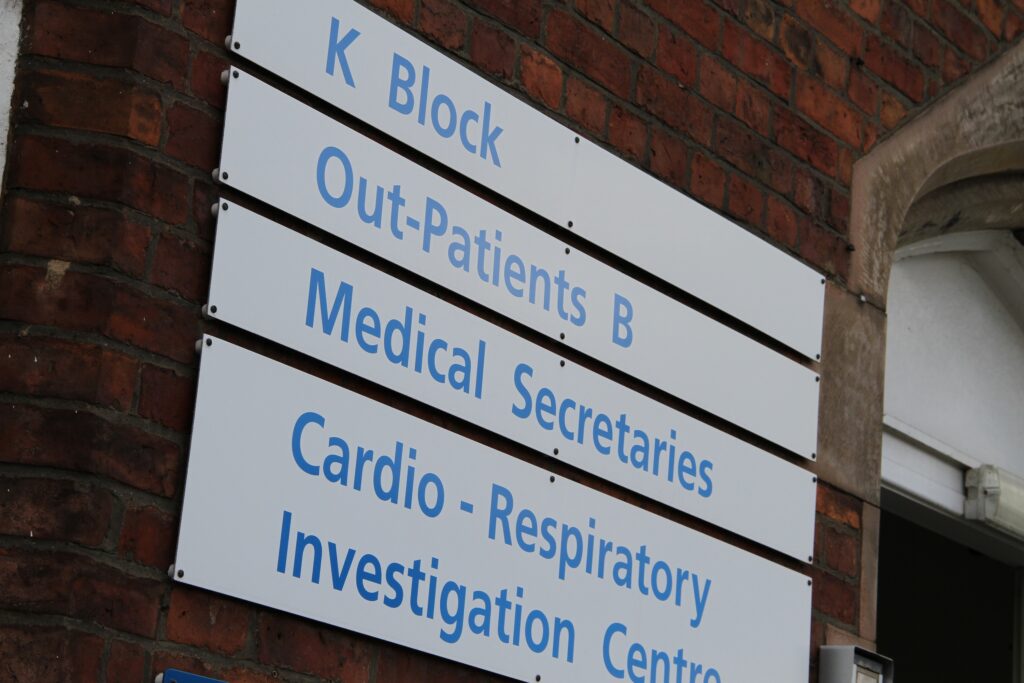A general election is coming, and Labour is likely to win. At its January meeting, the Highland Marketing advisory board discussed what should be on shadow health and social care secretary Wes Streeting’s agenda for health, care and technology.
A general election must be held before the end of January next year, and most commentators are expecting prime minister Rishi Sunak to go to the polls after the spring Budget or autumn spending statement.
Unless the polls are wrong, or there is a dramatic change in UK political fortunes, Labour will come to power whenever the election takes place. That has triggered interest in what shadow health and social care secretary Wes Streeting has been saying about health, care, and technology.
Streeting has been deliberately ruffling feathers by arguing that “Labour is too nostalgic about the NHS” and the health service needs “reform” more than it needs money (The Sun).
While it’s not yet clear what “reform” would look like, Labour’s “mission” for government talks about a shift towards prevention, to reduce demand on health and social care, and a shift towards community and social care, to ease pressure on the acute sector and improve access for patients.
Willing to face up to the task ahead?
The Highland Marketing advisory board thought this was disappointing and inadequate to the challenge ahead (a week after their debate, a coalition of experts assembled by the BMJ urged the next government to declare the state of the NHS a national emergency).
“Saying ‘there is no more money’ is not an acceptable message,” entrepreneur Ravi Kumar argued. “There are 1.3 million people working in the NHS, and they all vote, so they need to say they are going to find the money.”
Back in 1997, New Labour went to the polls warning there were “24 hours to save the NHS.” Even so, it tried to hold the line on Conservative Party funding commitments and installed the very Old Labour Frank Dobson as health secretary to keep the lid on industrial unrest.
It was forced to change track in 2000, following a winter crisis that unlocked a decade of unprecedented funding increases and The NHS Plan – billed, Wes Streeting might like to note, as ‘a plan for investment: a plan for reform.’

The money paid for new regulators, hospitals, scanners and IT, and the capacity to drive down waiting lists and times. Admittedly, less progress was made on community and primary care reforms and on public health.
Today, both need urgent attention and there will be consequences if they don’t get it, ranging from worsening health inequalities, to further council bankruptcies, to even more pressure on the NHS. However, the NHS is not responsible for their organisation or delivery, which falls to councils and the private sector, so there is only so much that NHS policy can achieve.
“In policy terms, we saw another boost for these ideas in the Five Year Forward View in 2014 and the NHS Long Term Plan in 2019, but not much has come of them,” industry expert David Hancock pointed out. “So, if Labour is going to stick with them, the question has to be: what is different this time?”
Natasha Phillips, the former national CNIO who has just joined the advisory board (Hospital Hub), hoped that Labour isn’t thinking that another round of reorganisation will do the trick.
“I think the first ask of any new government is: please do not re-invent the wheel or re-organise,” she said. “There are no perfect structures, and we all know from repeated re-organisations that changing them takes time and distracts from delivery. What we need to do is make the structures that we have work. That means workforce – boots on the ground and the money to pay for them.”
AI to the rescue!
Labour’s “mission” also puts a great deal of faith in technology. For example, it flags, the potential of AI and generative AI to read scans and deal with routine administration. Andy Kinnear, a former NHS CIO and consultant, said there is no doubt that both will be used widely in healthcare.
“Generative AI has gone from ‘that’s an interesting idea’ to reality in less than a year, and it’s going to rip across every area of our lives,” he said. “So, it’s not surprising Labour is talking about this, but there’s a lot we don’t know. Does radiology cease to exist as a profession, because AI can read the scans for us?
“Do 50,000 nurse vacancies no longer matter, because generative AI can make the workforce so efficient we don’t need those people?” Framed this way, it’s pretty obvious the answer is ‘no.’ So, if AI is going to support, rather than replace, workers and pathways, it’s not going to be a free good.
As radiology expert Rizwan Malik asked: “If Labour is saying there is no money, where is the money going to come from to do this? Because the NHS is recognised internationally as a leader on AI, but most of the things that have been deployed to date have been funded by the centre. Very little washes its face.
“If this is going to be rolled out more widely, local organisations are going to need to get business cases together, and it won’t be easy, when you take into account all the costs, including the server-end costs, and the implementation costs, and the change management…”
To which Natasha Phillips added training and education. “It’s easy for a party to say how much technology they will buy, but it’s not about just buying technology,” she said. “There will need to be investment in the workforce to get the most out of it.”
Jeremy Nettle, chair of the advisory board, agreed with this. “AI is a tool for clinicians and administrators to use, it is not a replacement for them,” he said. “And for it to be a tool, it needs to be funded. If you are going to use technology, and you want to use it to support a first-class service, there has to be the investment required to make it work.”
What about the rest of NHS IT?
It might be easier to make this kind of investment in AI if the rest of NHS IT was prepped and ready. In reality, too many organisations are working with overloaded infrastructure, patchy wi-fi, aging devices, and software systems that don’t integrate with each other – if they exist (fuller discussion, Health Tech World).
NHS England is running a frontline digitisation programme to try and get all trusts up to a basic level when it comes to electronic patient record capability. But successive cuts to the IT funding announced in the 2021 Budget mean it has been scaled back.
Trusts hoping to swap their legacy IT for “next generation” systems or to extend their EPR functionality are likely to be disappointed. Even the target to get EPRs into the trusts that don’t have them has been pushed back a year (digitalhealth.net).
“People are talking about AI as a silver bullet, and we have been down this road before,” said Cindy Fedell, a former NHS CIO who now works in Canada. “You can’t just drive down one road. We have crumbling infrastructure. Some hospitals don’t have EPRs. We need to invest in cyber security. There’s a lot to be done.”
And why do so many tech plans fail?
The latest end date for frontline digitisation is March 2026, which is well into the lifespan of the next government. So far, though, Labour has said nothing about the programme. Nor has it said what it will do about other, more recent, national projects, such as the significant investment that has been made in shared care records.
Yet, David Hancock pointed out, it will either need interoperable systems or something like SCRs if it is serious about integrated care and public health. And, for the moment, it’s SCRs that are the best bet for sharing longitudinal health data with care teams and population health management experts.
Labour is keen on the NHS App. Its mission says it will become a “one stop shop” for health information, fed by providers but “owned by the patient” to drive more “personalised” care across the system.
This sounds great, but very similar claims were made for putting patient data and information on “the information superhighway” back in 2000, in private personal health records like Microsoft Health Vault in the Cameron era, and portals today.
Indeed, some of Labour’s specific promises are less ambitious than previous commitments. For instance, the “mission” says it will use the Digital Transformation Fund to make sure that patients can “see their medical records through the app.”
When now chancellor and then health secretary Jeremy Hunt was promising patients read-write access as part of his “paperless by 2018” plans (thebmj). The advisory board felt Labour should reflect on why previous efforts to put information into the hands of patients to drive choice, engagement, and better outcomes, have achieved so little.
The constant reorganisation of ministerial and NHS teams and a lack of regulator and press interest in delivery have played a part. But, James Norman, a former NHS trust CIO who now works on the supplier side, felt the biggest reason is that they have been run as projects separate to day to day working.
“Any government that comes in this year will need to recognise that the first thing the NHS needs is to return to stability,” he said. “You can’t just talk about technology and expect it to deliver that. In fact, if you don’t do it right, you’re just going to add cost and complexity. It becomes another tick-box exercise, instead of a whole system change.”
No avoiding the need for leadership – and money
The advisory board felt that getting into fundamentals of system-change will require leadership from politicians, clinicians, and NHS managers. Which is hard to deliver when the political cycle is five-years and NHS leaders make their careers in the acute sector.
However, if Labour is going to get serious about the NHS, it will have to get into it. And find the money. Ravi Kumar said: “If there is a message for politicians, it is that they can shift the current dynamic, but to do it, they need to find the money. Any government can find money, if it wants. They found it during Covid. They can find it for wars. It’s a choice.”







Recent Comments